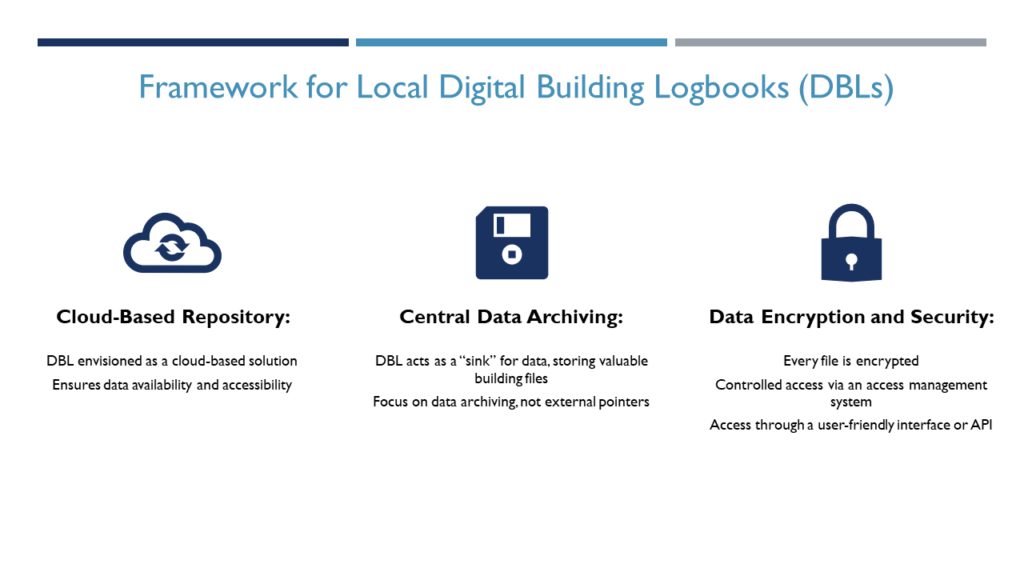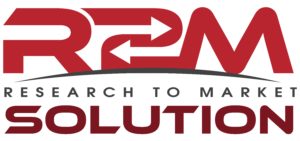Our buildings are not sustainable. Building carbon emissions arise from operational phases and material production, with embodied GHGs accounting for 20-25% of lifecycle emissions. Maintenance, repair, replacement, and demolition also add to the environmental impact.
To meet the emission cut target of 40% by 2030 and speed up the requalification of European buildings, the digitalisation of the construction sector is pivotal. This is why, among other initiatives, the EU has launched the Digital Building Logbooks (DBLs). In this article, we present the DBL functions, advantages and the new framework proposed by R2m Solution.
What is the Digital Building Logbooks (DBLs)
Firstly introduced by the 2020 EU Renovation Wave and the 2021 Energy Performance of Buildings Directive (EPBD), the Digital Building Logbook (DBL) serves as a centralized repository for all relevant building data. This repository facilitates informed decision-making and information sharing among construction sector stakeholders, including building owners, occupants, financial institutions, and public authorities.
In R2M Solution, within the scope of the Chronicle, Legofit and other European-funded projects, we are investigating and supporting the development of a framework for DBLs tailored to the needs of potential users and stakeholders and identifying the status of art of other DBLs in the market.
Thanks to our study, we identified the challenges and defined the data and information a DBL should include to support the management throughout the all-building life-cycle and to be aligned with the European Union’s key principles of
- findability,
- accessibility,
- interoperability,
- reusability.
What data and sources can form the DBL?
The sources for the data are variegated and the DBL allows the archiving of this data in a trustable repository providing the most comprehensive overview of the state of your building.
Apart from the existing national or regional initiatives and databases, the DBL can host building monitoring related information, and requirements European frameworks and initiatives.
This includes documents like energy performance certificates (EPCs), data from other existing building logbooks, building renovation passports, facility management reports, fire alarm reports, post-renovation analyses, information on life-cycle Global Warming Potential (GWP) and indoor environmental quality, certifications (LEED, BREEM and the EU Level(s)) as well as the new Smart Readiness Indicator (SRI), BIM models, information from the Digital Twins, and smart city datasets.
Although not exploited enough for historic buildings and residential areas, advanced BIM models and Digital Twins can provide useful and exhaustive data for real-time building conditions and better evaluation and informed decisions.
How to best organise data in DBL
-
According to our studies, in R2M Solution, we believe that data could be organised following this set of indicators:
- Building information indicators: the accuracy and completeness of the building’s information, the ease of access to information, and the security of the information and others.
- Energy consumption indicators: energy consumption over time, meter readings, real-time energy usage displays and others.
- Indoor comfort indicators: temperature, humidity, air quality, and lighting levels.
- Maintenance indicators: cleaning, HVAC checks, equipment replacement, schedules, checklists, and real-time notifications of maintenance needs and others.
- Occupancy indicators: to optimise the building’s energy use and resource allocation.
- Safety indicators: fire alarm status, emergency lighting, and evacuation routes.
- Financial indicators: operating costs, revenue, and return on investment and others.
- Sustainability indicators: carbon footprint, water usage, waste generation and others.
- Smart Readiness Indicators (SRI): these indicators are a set of metrics that measure the level of a building’s “smartness” based on a common EU scheme.

Challenges aspects for implementing a DBL
While developing a structured DBL, we spotted some criticalities among the current state of the art, such as a lack of clear definitions for valuable data, making it hard to prioritize and store relevant information.
- Ineffective data collection and management, resulting in incomplete, inaccurate or not-updated records.
- Lack of clear definition for valuable data or cases of redundancies.
- Fragmented and inaccessible data storage, creating silos that impede information retrieval.
- Lack of interoperability among stakeholders due to inconsistent data formats, hindering collaboration and efficiency.
- Many DBL tools are not user-friendly, complicating data access and utilization.
- Many stakeholders who can benefit from the use of a DBL don’t have a clear understanding of the related advantages and are not familiar with systematic data collection or the use of advanced technologies such as the digital twin (e.g. public administration)
Addressing these issues will enhance DBLs, facilitating better data management and decision-making in the construction sector.
Why we need a more structured and harmonised DBL.
Besides the key added value of having a user-friendly and exhaustive way to find information to make decisions regarding building management and improvements. The DBL can make other important contributions:
Centralized Data Repository and Enhanced Data Accessibility: the DBL ensures that data is readily available and accessible to authorized users anywhere in a single, centralised location. This ease of access facilitates better communication and coordination among stakeholders, including building owners, occupants, and regulatory authorities.
Interoperability: The DBL promotes interoperability by standardizing data formats and ensuring that different stakeholders can easily share and understand information. This interoperability is crucial for efficient collaboration and integration with other systems and tools at the national level but also among European countries to leverage international cooperation.
Lifecycle Management: The DBL supports the entire lifecycle of a building, from construction through maintenance, renovation, and demolition. It helps track and manage the building’s performance over time, enabling proactive maintenance and timely upgrades.
Regulatory Compliance: By maintaining comprehensive records of building data, the DBL helps ensure compliance with regulatory requirements and standards, such as energy efficiency certifications and environmental impact assessments.
Efficiency and Cost Savings: The DBL streamlines data management processes, reducing the time and effort required to gather and analyze building information. This efficiency can lead to cost savings in building operations and management.
Support for Sustainability Goals: By providing detailed data on energy performance and emissions, the DBL helps stakeholders identify opportunities for improving sustainability and reducing the environmental impact of buildings.
Our proposed DBL’s framework
In July 2024, Andrea Ibba (University of Cagliari, R2M Solution), presented at the 2024 European Conference on Computing in Construction (EC3) the first proposal of the framework developed by R2M within the Chronicle project and to be improved within the Legofit project.
The proposed high-level framework to effectively store this data in a way that can help in real-case scenarios is based on three characteristics:
- Cloud-Based Repository: The proposed DBL framework envisions a cloud-based solution to ensure data availability and accessibility. It acts as a central archive for valuable building files, emphasizing data security through encryption and controlled access via a user-friendly interface or API.
- Central Data Archiving: DBL acts as a “sink” for data, storing valuable building files. The focus on data archiving, not on retrieving data from innumerable, unknown external pointers
- Data Encryption and Security: Every file is encrypted. Therefore, once files are uploaded to the DBL, they remain unaltered but are accompanied by records containing standardized metadata, such as the associated building, upload date, responsible user, and modification log. This ensures data integrity and provides essential information for stakeholders.

Next Steps
The framework’s application in real-world scenarios includes projects like the Chronicle project, which constructs a DBL architecture, implements it within a European-funded project, and validates the platform using empirical data and various indicators.
Future efforts include establishing the criteria for valuable data in different scenarios, standardizing data structures, enhancing stakeholder engagement, and defining clear roles and interoperability among various construction solutions. Additionally, research on ontologies like Smart Applications REFerence (SAREF) will enrich data and improve the DBL framework’s effectiveness.
By addressing these challenges and implementing the proposed framework, DBLs can significantly enhance data management and decision-making in the construction sector, ultimately contributing to more sustainable and efficient building practices.

























